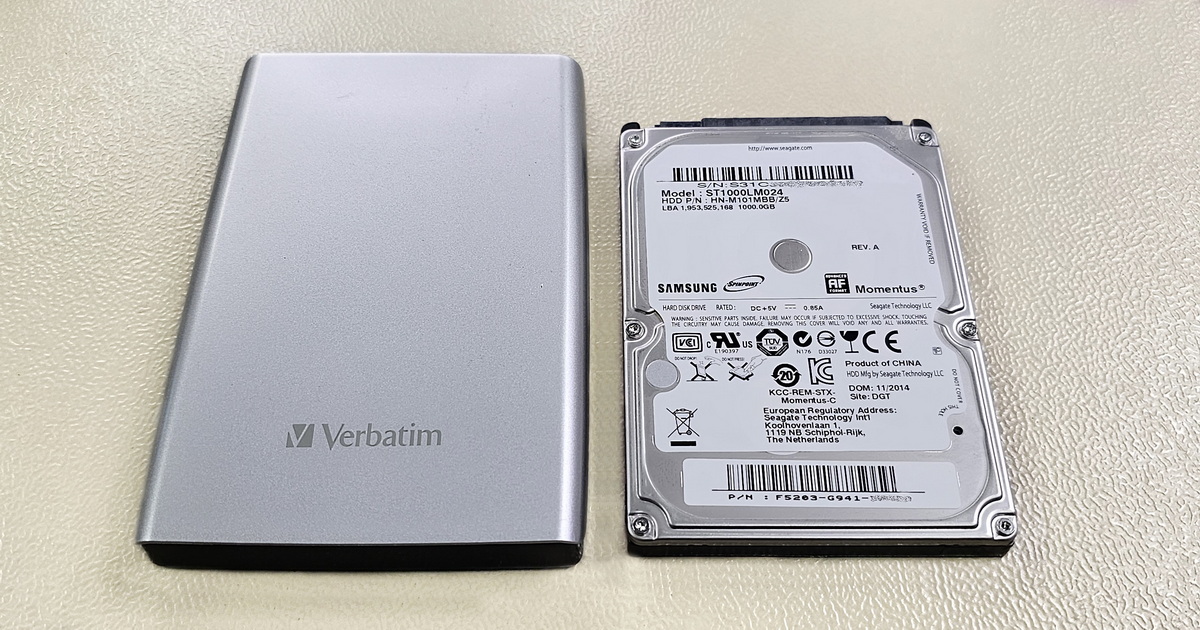Before the introduction of LUKS, there was no unified standard for disk encryption in Linux. There were several different encryption tools and systems, but they were not mutually compatible and had varying levels of security and reliability. Clemens Fruhwirth developed LUKS to simplify and improve the disk encryption process in Linux, ensuring data security and compatibility between different distributions and tools.
Today, LUKS is part of many Linux distributions and is considered a widely used and reliable tool for disk encryption. LUKS development continues and is regularly updated to remain compatible with the latest technologies and security standards.
Encrypting HDDs, SSDs and Other Storage Media
LUKS is suitable for encrypting hard drives, SSDs, USB flash drives and other storage devices. It is commonly used in Linux distributions for full disk encryption (all data partitions on the disk) or individual partitions. LUKS can also be used for encrypting file containers, allowing the storage of sensitive data in encrypted environments.
The method of encrypting hard drives (HDDs), or sector-by-sector encryption, is not suitable for encrypting SSDs. This approach would reduce SSD performance and shorten its lifespan. Linux (LUKS, dm-crypt), Windows (BitLocker), and macOS (FileVault) all take this into account, and these tools can encrypt SSDs in blocks.
Many SSDs have an integrated Self Encrypted Drive (SED) function, meaning the SSD controller itself handles encryption, with data permanently encrypted, eliminating the need to transfer this task to the computer and operating system. The SED key is stored in the SSD controller, and the encryption tool (LUKS, BitLocker, FileVault...) locks only the key in the controller. This feature benefits users, computer hardware, and the SSD itself.
TPM (Trusted Platform Module) and LUKS. What about Apple's T2?
LUKS and Linux, in general, can work with TPM. TPM is a hardware module that can store encryption keys and perform cryptographic operations. It is often used to enhance disk encryption security. To use TPM with LUKS in Linux, you can use tools like Clevis and Tang, which allow you to bind encryption keys to TPM.
It is worth noting that integrating TPM with LUKS in Linux may require additional configuration and sometimes the installation of extra packages, as it is not as deeply integrated as BitLocker with TPM in Windows. However, if set up correctly, the cooperation between LUKS and TPM can provide a higher level of security for disk encryption on the Linux platform.
Apple also has its cryptographic processor, similar to TPM, called T2. However, the integration of Apple hardware, Linux OS, and the LUKS encryption tool (dm-crypt) is more theoretical, and there is no available information on successful implementations.
History of LUKS - Who is Clemens Fruhwirth?
Clemens Fruhwirth is an Austrian software engineer known for his contributions to encryption and security. His most famous work is the development of LUKS, which he introduced in 2004 as the standard for disk encryption in Linux.
Before the introduction of LUKS, there was no unified standard for disk encryption in Linux. There were several different encryption tools and systems, but they were not mutually compatible and had varying levels of security and reliability. Clemens Fruhwirth developed LUKS to simplify and improve the disk encryption process in Linux, ensuring data security and compatibility between different distributions and tools.
In addition to his work on LUKS, Clemens Fruhwirth also engages in other areas of software engineering and security. His expertise and contributions in these fields have helped shape the development of modern encryption and security standards used today in Linux and other operating systems.
LUKS, BitLocker, and FileVault
LUKS, BitLocker, and FileVault are comparable in the sense that they all provide software disk encryption at the operating system level. Each of them, however, is designed for different platforms and has its own specific features:
LUKS is an encryption standard for Linux. It is primarily used in Linux distributions and is known for its flexibility and platform independence. LUKS uses dm-crypt as a backend for disk encryption and supports a wide range of encryption algorithms.
BitLocker is an encryption tool integrated into some versions of Windows. It is designed specifically for Windows and is closely integrated with TPM (Trusted Platform Module) for increased security. BitLocker uses AES for encryption and supports full disk encryption or individual partitions.
FileVault is an encryption tool for macOS. Like BitLocker, it is designed specifically for its platform and is closely integrated with the operating system. In newer Apple devices, it also works with the T2 cryptographic processor. FileVault 2, the current version, uses XTS-AES-128 encryption with a 256-bit key for full disk encryption.
Although these tools provide similar functionality, they have their own specific features and are designed for different operating systems. Therefore, it is essential to choose the right encryption tool for your platform and consider compatibility and integration options with hardware like TPM.









